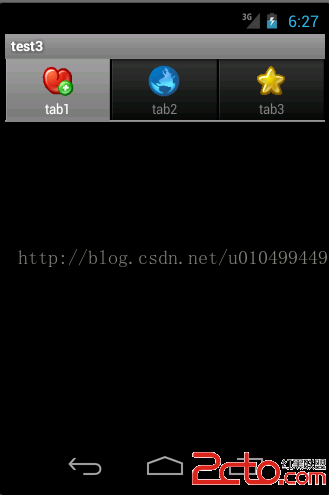編輯:關於Android編程
在上一次的初次使用cmake編譯jni後,這次cmake文件再次升級。利用網上的代碼來編譯一個簡單的播放器。在cmake下重新編譯。特將過程分享給大家。
apply plugin: 'com.android.application'
android {
compileSdkVersion 22
buildToolsVersion "23.0.1"
//sourceSets.main.jni.srcDirs = ['jniLibs']
defaultConfig {
applicationId "jonesx.videoplayer"
minSdkVersion 9
targetSdkVersion 22
versionCode 1
versionName "1.0"
ndk {
abiFilters 'armeabi'
}
externalNativeBuild {
cmake {
arguments '-DANDROID_TOOLCHAIN=clang','-DANDROID_STL=gnustl_static'
}
}
}
buildTypes {
release {
minifyEnabled false
proguardFiles getDefaultProguardFile('proguard-android.txt'), 'proguard-rules.pro'
}
}
externalNativeBuild {
cmake {
path "src/main/cpp/CMakeLists.txt"
}
}
}
dependencies {
compile fileTree(dir: 'libs', include: ['*.jar'])
compile 'com.android.support:appcompat-v7:22.2.1'
compile 'com.android.support:design:22.2.1'
}
cmake_minimum_required(VERSION 3.4.1)
set(lib_src_DIR ${CMAKE_SOURCE_DIR}/../jniLibs/${ANDROID_ABI})
include_directories(
${CMAKE_SOURCE_DIR}/include
)
add_library(avcodec-57_lib SHARED IMPORTED)
set_target_properties(avcodec-57_lib PROPERTIES IMPORTED_LOCATION
${lib_src_DIR}/libavcodec-57.so)
add_library(avformat-57_lib SHARED IMPORTED)
set_target_properties(avformat-57_lib PROPERTIES IMPORTED_LOCATION
${lib_src_DIR}/libavformat-57.so)
add_library(avutil-55_lib SHARED IMPORTED)
set_target_properties(avutil-55_lib PROPERTIES IMPORTED_LOCATION
${lib_src_DIR}/libavutil-55.so)
add_library(swresample-2_lib SHARED IMPORTED)
set_target_properties(swresample-2_lib PROPERTIES IMPORTED_LOCATION
${lib_src_DIR}/libswresample-2.so)
add_library(swscale-4_lib SHARED IMPORTED)
set_target_properties(swscale-4_lib PROPERTIES IMPORTED_LOCATION
${lib_src_DIR}/libswscale-4.so)
# build application's shared lib
add_library(VideoPlayer SHARED
VideoPlayer.cpp)
# Include libraries needed for VideoPlayer lib
target_link_libraries(VideoPlayer
log
android
avcodec-57_lib
avformat-57_lib
avutil-55_lib
swresample-2_lib
swscale-4_lib)
解釋下,這裡添加了依賴的so庫,注意路徑呀,我在這裡坑了半天,還有同事拯救了我。
add_library(swscale-4_lib SHARED IMPORTED)
set_target_properties(swscale-4_lib PROPERTIES IMPORTED_LOCATION
${lib_src_DIR}/libswscale-4.so)
最後,不要忘了,target_link_libraries中添加對應的庫。
// // Created by Jonesx on 2016/3/20. // #include#include "VideoPlayer.h" #include #include #include extern "C"{ #include "libavcodec/avcodec.h" #include "libavformat/avformat.h" #include "libswscale/swscale.h" #include "libavutil/imgutils.h" }; #define LOG_TAG "videoplayer" #define LOGD(...) __android_log_print(ANDROID_LOG_DEBUG, LOG_TAG, __VA_ARGS__) JNIEXPORT jint JNICALL Java_jonesx_videoplayer_VideoPlayer_play (JNIEnv *env, jclass clazz, jobject surface) { LOGD("play"); // sd卡中的視頻文件地址,可自行修改或者通過jni傳入 char *file_name = "/sdcard/test.mp4"; av_register_all(); AVFormatContext *pFormatCtx = avformat_alloc_context(); // Open video file if (avformat_open_input(&pFormatCtx, file_name, NULL, NULL) != 0) { LOGD("Couldn't open file:%s\n", file_name); return -1; // Couldn't open file } // Retrieve stream information if (avformat_find_stream_info(pFormatCtx, NULL) < 0) { LOGD("Couldn't find stream information."); return -1; } // Find the first video stream int videoStream = -1, i; for (i = 0; i < pFormatCtx->nb_streams; i++) { if (pFormatCtx->streams[i]->codec->codec_type == AVMEDIA_TYPE_VIDEO && videoStream < 0) { videoStream = i; } } if (videoStream == -1) { LOGD("Didn't find a video stream."); return -1; // Didn't find a video stream } // Get a pointer to the codec context for the video stream AVCodecContext *pCodecCtx = pFormatCtx->streams[videoStream]->codec; // Find the decoder for the video stream AVCodec *pCodec = avcodec_find_decoder(pCodecCtx->codec_id); if (pCodec == NULL) { LOGD("Codec not found."); return -1; // Codec not found } if (avcodec_open2(pCodecCtx, pCodec, NULL) < 0) { LOGD("Could not open codec."); return -1; // Could not open codec } // 獲取native window ANativeWindow *nativeWindow = ANativeWindow_fromSurface(env, surface); // 獲取視頻寬高 int videoWidth = pCodecCtx->width; int videoHeight = pCodecCtx->height; // 設置native window的buffer大小,可自動拉伸 ANativeWindow_setBuffersGeometry(nativeWindow, videoWidth, videoHeight, WINDOW_FORMAT_RGBA_8888); ANativeWindow_Buffer windowBuffer; if (avcodec_open2(pCodecCtx, pCodec, NULL) < 0) { LOGD("Could not open codec."); return -1; // Could not open codec } // Allocate video frame AVFrame *pFrame = av_frame_alloc(); // 用於渲染 AVFrame *pFrameRGBA = av_frame_alloc(); if (pFrameRGBA == NULL || pFrame == NULL) { LOGD("Could not allocate video frame."); return -1; } // Determine required buffer size and allocate buffer // buffer中數據就是用於渲染的,且格式為RGBA int numBytes = av_image_get_buffer_size(AV_PIX_FMT_RGBA, pCodecCtx->width, pCodecCtx->height, 1); uint8_t *buffer = (uint8_t *) av_malloc(numBytes * sizeof(uint8_t)); av_image_fill_arrays(pFrameRGBA->data, pFrameRGBA->linesize, buffer, AV_PIX_FMT_RGBA, pCodecCtx->width, pCodecCtx->height, 1); // 由於解碼出來的幀格式不是RGBA的,在渲染之前需要進行格式轉換 struct SwsContext *sws_ctx = sws_getContext(pCodecCtx->width, pCodecCtx->height, pCodecCtx->pix_fmt, pCodecCtx->width, pCodecCtx->height, AV_PIX_FMT_RGBA, SWS_BILINEAR, NULL, NULL, NULL); int frameFinished; AVPacket packet; while (av_read_frame(pFormatCtx, &packet) >= 0) { // Is this a packet from the video stream? if (packet.stream_index == videoStream) { // Decode video frame avcodec_decode_video2(pCodecCtx, pFrame, &frameFinished, &packet); // 並不是decode一次就可解碼出一幀 if (frameFinished) { // lock native window buffer ANativeWindow_lock(nativeWindow, &windowBuffer, 0); // 格式轉換 sws_scale(sws_ctx, (uint8_t const *const *) pFrame->data, pFrame->linesize, 0, pCodecCtx->height, pFrameRGBA->data, pFrameRGBA->linesize); // 獲取stride uint8_t *dst = (uint8_t *) windowBuffer.bits; int dstStride = windowBuffer.stride * 4; uint8_t *src = (pFrameRGBA->data[0]); int srcStride = pFrameRGBA->linesize[0]; // 由於window的stride和幀的stride不同,因此需要逐行復制 int h; for (h = 0; h < videoHeight; h++) { memcpy(dst + h * dstStride, src + h * srcStride, srcStride); } ANativeWindow_unlockAndPost(nativeWindow); } } av_packet_unref(&packet); } av_free(buffer); av_free(pFrameRGBA); // Free the YUV frame av_free(pFrame); // Close the codecs avcodec_close(pCodecCtx); // Close the video file avformat_close_input(&pFormatCtx); return 0; }
這裡是正常的ffmpeg編解碼流程。參見雷神
這裡又有一個坑點,由於我使用的是c++ 編譯器clang,而ffmpeg的so庫均為c語言的,故需添加
extern "C"{
include "libavcodec/avcodec.h"
include "libavformat/avformat.h"
include "libswscale/swscale.h"
include "libavutil/imgutils.h"
};
如果這裡沒添加extern "C"{},即不是按C語言編譯,就會存在undefined reference錯誤。下面是使用
package jonesx.videoplayer;
/**
* Created by Jonesx on 2016/3/12.
*/
public class VideoPlayer {
static {
System.loadLibrary("VideoPlayer");
}
public static native int play(Object surface);
}
這裡使用的SufaceView來進行播放。
public class MainActivity extends AppCompatActivity implements SurfaceHolder.Callback {
SurfaceHolder surfaceHolder;
@Override
protected void onCreate(Bundle savedInstanceState) {
super.onCreate(savedInstanceState);
setContentView(R.layout.activity_main);
SurfaceView surfaceView = (SurfaceView) findViewById(R.id.surface_view);
surfaceHolder = surfaceView.getHolder();
surfaceHolder.addCallback(this);
}
@Override
public void surfaceCreated(SurfaceHolder holder) {
new Thread(new Runnable() {
@Override
public void run() {
VideoPlayer.play(surfaceHolder.getSurface());
}
}).start();
}
@Override
public void surfaceChanged(SurfaceHolder holder, int format, int width, int height) {
}
@Override
public void surfaceDestroyed(SurfaceHolder holder) {
}
}
 Android 創建標簽式的版面設置 (筆記)
Android 創建標簽式的版面設置 (筆記)
利用TabHost創建標簽式的版面設置,進行不同標簽的切換,顯示不同的背景圖片。效果如下所示: 1、添加6張圖片資源(直接拖入drawable文件夾),分別為gra
 Android 之Handle的使用原理理解
Android 之Handle的使用原理理解
Handle的使用,首先我們要明白一點,那就是Handle的用處,Handle是用來做什麼的,明白了這點,那麼我在來理解下面的內容。 一:接下來我來說明一下Handl
 Android自定義控件實現圓形進度條
Android自定義控件實現圓形進度條
項目中常用到的圓形進度條有好多個,從網上搜到的自定義進度條多是封裝的比較好的代碼,但是不利於初學者,現在本博客就教給大家如何一步步實現自定義進度條的效果 相關視頻鏈接:
 Android自定義View之圓形進度條式按鈕
Android自定義View之圓形進度條式按鈕
介紹今天上班的時候有個哥們問我怎麼去實現一個按鈕式的進度條,先來看看他需要實現的效果圖。和普通的圓形進度條類似,只是中間的地方有兩個狀態表示,未開始,暫停狀態。而且他說圓